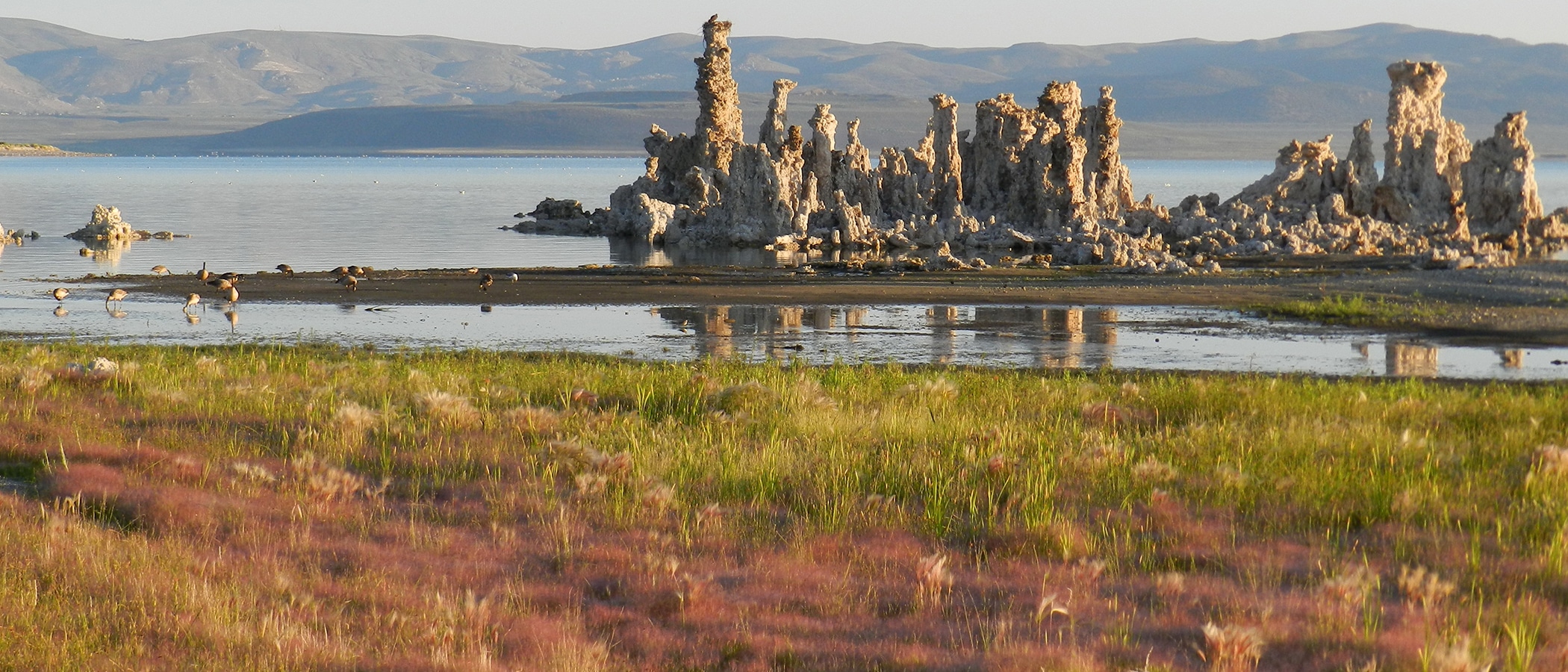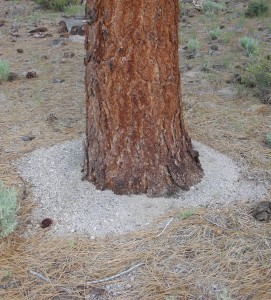
This post was written by Julia Runcie, 2011 Mono Lake Intern.
Researcher Sarah Dalrymple of UC Davis spoke at the Mono Lake Committee on Wednesday, August 4 as part of our “Refreshments with Refreshing ‘Ologists” lecture series. Dalrymple is a PhD candidate in biology whose work centers in the Jeffrey pine forest just south of the Mono Basin on the Deadman Plateau.
If you’ve ever taken a stroll in the woods near Obsidian Dome or Wilson Butte, you may have noticed distinct rings around certain pine trees where the ground has been cleared of needle litter. Intrigued by this phenomenon, Dalrymple did some preliminary investigation and discovered a strong correlation between the presence of these cleared rings and the survival of trees during a forest fire. In one recently-burned area, trees with clearings around their trunks had a 60% reduction in mortality compared to trees without clearings. Dalrymple set out to determine what creates and maintains these clearings and what role they play in the fire cycle of the forest.

First, Dalrymple compared clearings in forests that had and had not experienced a recent regime of prescribed burns. She found that tree clearings are very common in recently burned areas, and that both frequency of clearings and clearing size decline as the time since the last fire increases. This indicates that fire is essential to the creation of these clearings and probably also helps to maintain them. But since neither prescribed burns nor wildfires happen very often, Dalrymple felt sure that some other mechanisms must be contributing to the long-term maintenance of cleared rings around trees.
She began to brainstorm all the factors that could keep the areas cleared. Wind? Rain flowing down the tree trunks? The fact that most needles grow near the ends of branches and therefore tend to fall further from the trunks? Yet none of these explanations seemed quite compelling enough. Dalrymple had noticed that there seemed to be a greater frequency of ant nests in cleared areas than elsewhere on the forest floor. Testing revealed that 60% of clearings contained ant nests. Could the ants be responsible for keeping pine needle litter away from the trunks of the trees?
Further experiments seem to indicate that ants and Jeffrey pines may be engaged in a mutualistic relationship. Dalrymple found that foraging ants that live near trees have a much higher success rate than those that live far from trees. The proportion of active nests (nests where many ants are moving in and out during a 20 second period) in an area also increases with proximity to a tree trunk, possibly due to the shade the tree canopy provides during the heat of the day. Because ants prefer to nest in open ground, they could be helping to move needles away from the tree trunks where they make their nests. These cleared areas in turn seem to protect the trees during forest fires by creating a firebreak close to the trunks.
While this ant-tree relationship is fascinating, Dalrymple’s research makes clear that regular fire is the key ingredient in the mix. In forests where prescribed burns do not regularly occur, there are fewer tree clearings and no observable association between ants and trees. Frequent fires set the stage on which the ant-tree interaction plays out, contributing to the maintenance of the clearings that enhance tree survival during future fires.
Thanks again to Sarah Dalrymple for giving us all something new to think about. Next time you’re out in the Jeffrey pine forest, take a closer look at the clearings around some of the trees. If you’re lucky, you might even catch a glimpse of the elusive ants at work!

